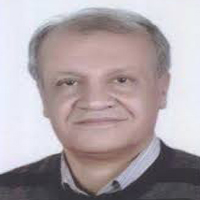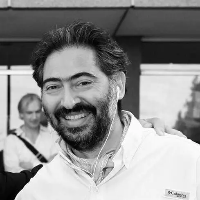Land-Use Planning in the Face of Earthquakes in worn-outtextureCase Study: Abdulabad, Tehran
Human has always encountered natural disasters; attempting, consequently, to find solutions to deal with them. Meanwhile, worn-outtexture and buildings situated in them faced most damages including; snapped pipelines, fires, blocked access routes, poor assistance and late evacuation. Studies on the damages caused by earthquakes indicate their relationship with improper planning and the process of detecting and mitigating them. Actually, the main reason for the damages caused by earthquake is the negligence in structure safety standards due to lack of proper urbanism plans and designs for which effective measures should be taken, identifying the textures and their function and behavior during earthquakes. The purpose of this paper is to study effective components in resilience of worn-outtexture during earthquakes in Abdolabad in district 19 of Tehran. The research method is analytical- descriptive and library and document studies have been conducted as well as AHP and Expert Choice- based analyses. Results indicate that management, economy and citizens’ involvement in renewal and revival process with 0.145, 0.112 and 0.110 scores are in first to third place, respectively and this reflects their importance compared with other components of the study. Additionally, in this paper, considering the components and sub-criteria and using the software, North Abdolabad, compared with South Abdolabad, was in the first place and accordingly, best area in terms of post-earthquake planning to manage and organize.
As an influential tool for urban authorities, land use planning plays an important role in the increased resilience of urban communities. Considering the importance of the subject in different aspects and diverse conditions in the pursuit of justice, land use planning with equitable distribution of resources and services has been ignored by scholars, policy makers and urban planners and managers with no worthwhile results in this regard (Mousavi, 2012). Due to inattention and loss as a result of erosion, worn-outtextures contain the potential for various types of damage. Physical development and rapid growth of cities during recent decades led to poor distribution of urban centers resulting in lack of equal enjoyment of services by the citizens (Pourmohammadi, 2016:92).
Studying land use resilience during the earthquakes in vulnerable textures, with minimum use of facilities and land, this paper seeks provide a land use planning and other effective components in order to propose best reaction and least damage during critical conditions. In terms of method and type, this study is descriptive- analytical i.e. the issue is handled systematically and its components are analyzed. Identifying the variables affecting a problem through descriptive and library methods, first, an effective pattern and appropriate indicators for components analysis were provided and then, using experts’ ideas, factors were weighed. Setting critical components, a hierarchical structure of factors was provided in AHP to determine, prioritize and take optimal components. AHP was used for calculations and Microsoft Choice and Microsoft Excel for components rating and priority.
Results from Expert Choice indicate that, from measured components, management is in the first place with undeniable role in the evolution of the city and its center. Meanwhile, the important point is that a manager should be able to make a relationship between their goals in worn-out areas and urban system as a whole. Economy (0.112), also,is in second place impacting the formation and urban texture content regarding the indicators such as job, income, various activities and services. Distribution of poverty and wealth and creating an average level of life for the residents, appropriate distribution of accessible urban services around the city results in the integration and flow of life in all city areas and their renewal and prosperity (Ziaii Thani, 2012). Citizens’ involvement in revival and renewal process is the third component (0.110). According to this component, despite community cohesion and strong social textureas a result of its position compared with other urban areas, worn-outtexture suffers problems beyond construction methods and similar issues. Accordingly, physical intervention in these textures is ineffective and other solutions such as public involvement need to be considered. Fabric and land use (0.093) were in fourth place that indicates theirs importance compared with other components. This type of planning with resilience management to counter natural disasters increases the safety of the spaces used by citizens and easy access by rescue groups. Function was in fifth place (0.084) in Expert Choice. Today, creating user diversity in urban space is an important issue and in real life, also, when working space predominates, compared with residential and touristic spaces, many social and spatial problems occur in that area (Qanavati, 2011:15). Environment was the sixth component (0.082)in which production and emission of land and air pollutions result in declined quality of urban texture, migration, stopped renovation and thereupon, worn-outtextures. Population was seventh component (0.081) with considerations such as high population density, high number of children, elderlies, women and disabled people and high household density in housing units result in increased vulnerability. As the eighth component, culture had a great impact on neighborhoods; especially during earthquakes for preserving and effectiveness of which during critical situations, factors such as increased social communications, strengthened sense of community, participation in periodical events and ceremonies, satisfaction measurement, reduced social and cultural disorders in the texture are considered; therefore, the more homogenous the community in terms of culture, the less the vulnerability will occur (Taherkhani, 2012: 102). Ninth component was society (0.076) according to Expert Choice, indicating positive relationship between emotional satisfaction of people and physical environment. Place attachment depends on people’s participation in environment and their cultural interactions considered more important than fabric by some experts (Marcus& Sarkissian, 1988). The last component was traffic and transportation and considering its unimportant place among other components, it concerns normal conditions of the society.
According to the explanations, factors resulting in increased risk include: population growth, unplanned urban development, rapid development of informal residencies, overflow of the population of urbanized areas, degraded ecosystem, etc. Therefore, urban planners should attempt to create a quiet, safe and healthy place for residents.
Land Use , Resilience , old tissue , Earthquake , Abdolabad
- حق عضویت دریافتی صرف حمایت از نشریات عضو و نگهداری، تکمیل و توسعه مگیران میشود.
- پرداخت حق اشتراک و دانلود مقالات اجازه بازنشر آن در سایر رسانههای چاپی و دیجیتال را به کاربر نمیدهد.




